Singaporean Roti John
Singapore is an island, a city-state, a port town at the far south end of the Malay Peninsula. Its position at one end of the Strait of Malacca, the easiest route between the Indian and Pacific Oceans, made it a desirable piece of real estate during the era of European colonialism. If you’ve taken history classes, you know what that means.
In 1819 a treaty was negotiated by the adorably-named Sir Thomas Stamford Bingley Raffles to give England a port and trading post on the island. From there, England eventually came to control most of the island, establish a foothold in the region and exert its influence over trade between India and China. Both Indians and Chinese migrated to Singapore, eventually making up the majority of its population. World War II interrupted British possession of the island, during which time it was occupied by the Japanese. Post-war, the British colonial period ended in 1963 when Singapore and several other nations in the peninsula merged to form Malaysia, which promptly kicked Singapore out, resulting in the independent nation Singapore is today.
Since then Singapore has been a mix between Eastern and Western cultures, a modern and culturally diverse mix of English, Chinese, Indian, and Southeast Asian influences. If you’ve read this site, you know what that means. When the culinary techniques of colonizers have mixed with the techniques and ingredients of local cuisine, some of the most interesting sandwiches have been born.
Roti John did not emerge during the colonial period but during the birth of modern Singapore. The story goes that some time in the middle 1960s, an Englishman asked the proprietor of a street food stall to give him a hamburger, and had to describe to the fellow what a hamburger was. Thinking quickly, the vendor used what he had on hand to make the man a sandwich–baguette, egg, onions, chilis, tomato sauce and chili sauce. Apocryphally, when it was done he is said to have offered it to the man saying “Silakan makan roti, John.”
“John” being a slang term for a European and “roti” being a generic term for bread derived from a style of Indian flatbread, the phrase translated roughly to “Eat this bread, white man.” Thus, Roti John is “honky bread” in the creole of Singapore. Sometimes called “omelet bread,” it consists of beaten eggs, onions, and some minced meat, beaten into an omelet, then cooked on a flat top grill with a section of baguette pressed into it to soak up some of the eggs, warm the bread, and adhere the filling to it. The meat is often chicken, mutton, or beef, sometimes sardines or anchovies, sometimes (depending on both the customer’s and the client’s beliefs) even pork. This is then garnished with peppers, cucumbers, tomatoes, or other salad ingredients, and dressed with a variety of sauces such as mayo, ketchup, and chili sauces
Roti John recipes abound on the internet. A writeup of the secret recipe of one of the classic purveyors of the sandwich on this Singaporean news site caught my attention though with its mention of “ground purple onions,” and so I put together my own version using that tip and some elements of other recipes.
Regarding Sauces: many types of chili sauce are mentioned in the writeups I’ve read. Some mention a tomato-chili sauce, some mention sweet chili sauce, some mention Sriracha or Sambal Oelek. My coworker Matt, who lived and worked in Singapore for a few years, compared the tomato-chili sauce that was available at a stand he frequented to the type of sauce simply called Chili Sauce on American grocery shelves, for example Heinz brand Chili Sauce. So I got some of that and put it in a squeeze bottle. I also made some sweet Singaporean chili sauce from a mix of Thai, Goat Horn, and Serrano peppers from my garden, and I got some Sambal Oelek and Sriracha as well. I also made some Kewpie-style mayonnaise and put it in another squeeze bottle. My sauce collection for this sandwich was serious.
So now that I’ve written 700 words on the history of Singapore and the nuances of chili sauce, how about I give you that recipe?
Roti John
Prep Time: 20 minutes
Total Time: 30 minutes
Yield: Several sandwiches
Ingredients
- 5 eggs, beaten
- 1/2 lb ground lamb
- 2 TB red onion, grated
- 1 TB good curry powder
- 1 tsp garlic ginger paste
- a little salt
- Baguette
- sliced tomatoes
- shredded lettuce
- green onions sliced thin
- Long thin red chili pepper, sliced thin
- A bevy of sauces
Instructions
- Beat the eggs, ground beef, curry powder, onion, garlic-ginger paste, and salt together in a bowl. Note: if you are not sharing this with people more timid of spice, you could mix in some of that Sambal Oelek as well.
- Cut a sandwich-length section of baguette, then cut it in half longways, leaving a hinge on one side
- Spread several large spoons full of the egg mixture onto the baguette, covering the bread as entirely as possible. Let sit for a moment to allow the egg to seep into the bread
- Invert the bread onto a buttered griddle. Press the bread down onto the griddle with your spatula. If you have a domed lid that will fit over the bread, use that to help cook the portion of egg that has soaked into the bread.
- When the egg and meat have cooked fully, invert the bread again and let it sit on the griddle a moment to heat the bread’s crust.
- When ready to serve, add vegetables. You can use lettuce, cucumber, tomato, green onions, chili peppers, bell peppers, whatever salad elements you wish really. I believe that lettuce, cucumbers, tomatoes, and chilies are fairly standard.
- Now, dress the veggies with your sauces. From some photos I’ve seen, it’s actually customary to close the sandwich and drizzle the sauces on top. That sounds really sloppy and contrary to the idea of street food in my mind. Still, keep in mind that my version may not be entirely authentic. I used Sriracha, sweet chili sauce, American chili sauce, and my homemade Japanese-style mayonnaise.
- Cut into several individual serving portions. Or just eat the whole damn thing yourself like I did.
Isn’t that a beauty? To be honest, even with the sauces on the inside it was a sloppy mess to eat, but let’s take this moment to enjoy its aesthetics before pressing on to the actual eating.
The Roti John I made is Indian influenced, with the curry powder and garlic-ginger paste, which seems appropriate for the cuisine of Singapore from my recent reading on it. The way the egg soaks into the bread and then cooks is reminiscent of French Toast, and in fact the sandwich presents a kind of gradient between the crusty exterior of the baguette, the soft bread, the savory bread pudding where the egg has soaked into the crumb, and then the meaty omelet filling.
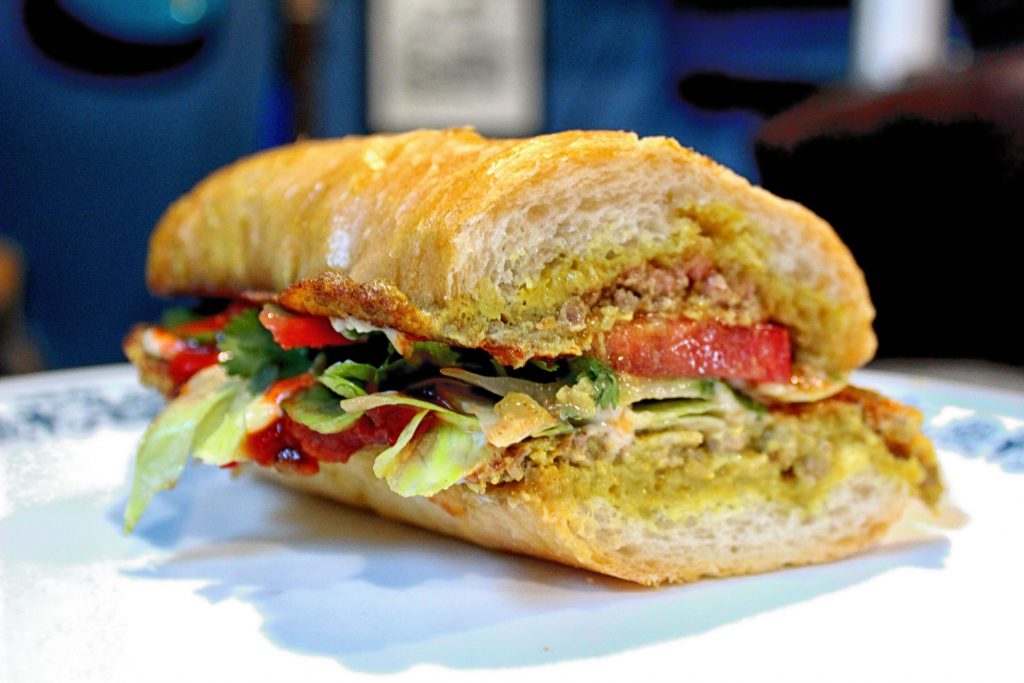
The bread, egg, and meat sections of the sandwich are filling, very much so, bordering on heavy. This makes the salad and dressings in the middle a welcome counterpoint. My youngest was a big fan of the Heinz chili sauce, though he felt some initial trepidation about it as he is capsaicin-averse. This is largely just a less-sweet ketchup though, and along with the homemade mayo, yolk-heavy, slightly sweet and umami-rich, this made a good breakfast sandwich for him sans veggies. In fact, he was weirdly enthusiastic about it and ate a few more over the course of the day. For me, I wanted that crisp lettuce and cucumber freshness in the middle, the juicy tomatoes, and the bite of the tiny rings of Thai chili I’d added. Sriracha was a natural for this, along with the sweet chili sauce, essentially a thicker version of something you might dip a spring roll into at a Thai or Vietnamese restaurant.
This combination of sweet, savory, and spicy is a classic element of Southeast Asian cuisine, and yet the overall effect is not entirely different than that of a hamburger. Or at least, I can understand a situation in which I would describe the things i like about a hamburger to a smart and skilled cook from this culture who has had no prior experience with hamburgers, and I would end up with something like this. The hot minced meat, freshly griddled, its browned edges melting into the cut side of a soft bread roll, dressed with various sauces and vegetables. Some people even request them with cheese, a possibility I did not try but can envision myself exploring in the future.
Since its invention in Singapore, the Roti John has spread and can be found in food stalls throughout much of the Malay peninsula. It’s commonly served as breakfast, or as a midday snack, though I can see this being a big hit for the late night crowd as well. Eggy, spicy, meaty bread is just the thing to sop up a night’s mistakes before sleeping them off. Yet it can be toned down and served mild enough to delight a picky tween as well. We’ve decided this recipe is a keeper and I hope you like it as well!
Roti John
Ingredients
- 5 eggs beaten
- 1/2 lb ground lamb
- 2 TB red onion grated
- 1 TB good curry powder
- 1 tsp garlic ginger paste
- a little salt
- Baguettes
- tomatoes sliced
- lettuce shredded
- green onions sliced thin
- Long thin red chili pepper sliced thin
- A bevy of sauces mayonnaise, ketchup, chili sauce, etc
Instructions
- Beat the eggs, ground beef, curry powder, onion, garlic-ginger paste, and salt together in a bowl.
- Cut a sandwich-length section of baguette, then cut it in half longways, leaving a hinge on one side
- Spread several large spoons full of the egg mixture onto the baguette, covering the bread as entirely as possible. Let sit for a moment to allow the egg to seep into the bread
- Invert the bread onto a buttered griddle. Press the bread down onto the griddle with your spatula. If you have a domed lid that will fit over the bread, use that to help cook the portion of egg that has soaked into the bread.
- When the egg and meat have cooked fully, invert the bread again and let it sit on the griddle a moment to heat the bread’s crust.
- When ready to serve, add salad vegetables
- Dress with your desired sauces.
- Cut into several individual serving portions
Notes
- If you are not sharing this with people more timid of spice, you could mix sambal oelek into the eggs.

I like sandwiches.
I like a lot of other things too but sandwiches are pretty great


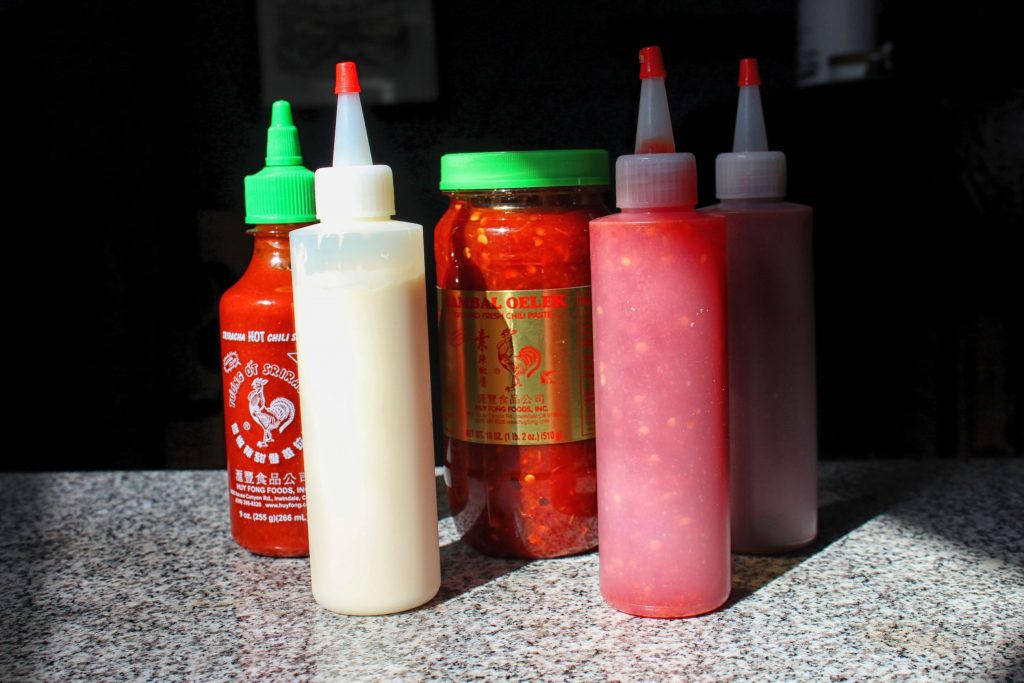
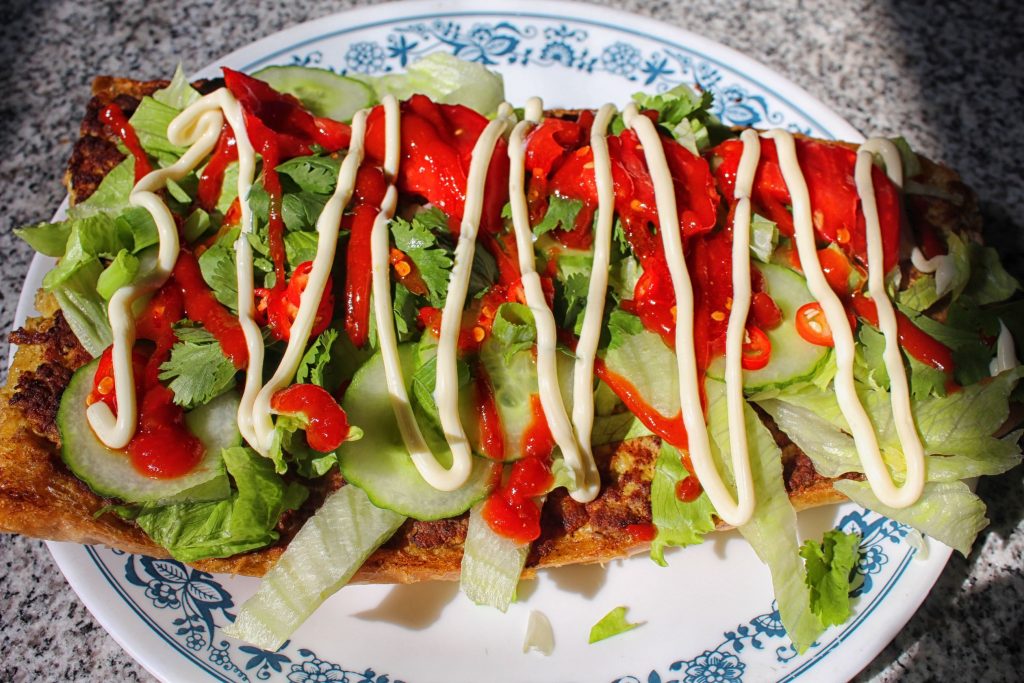
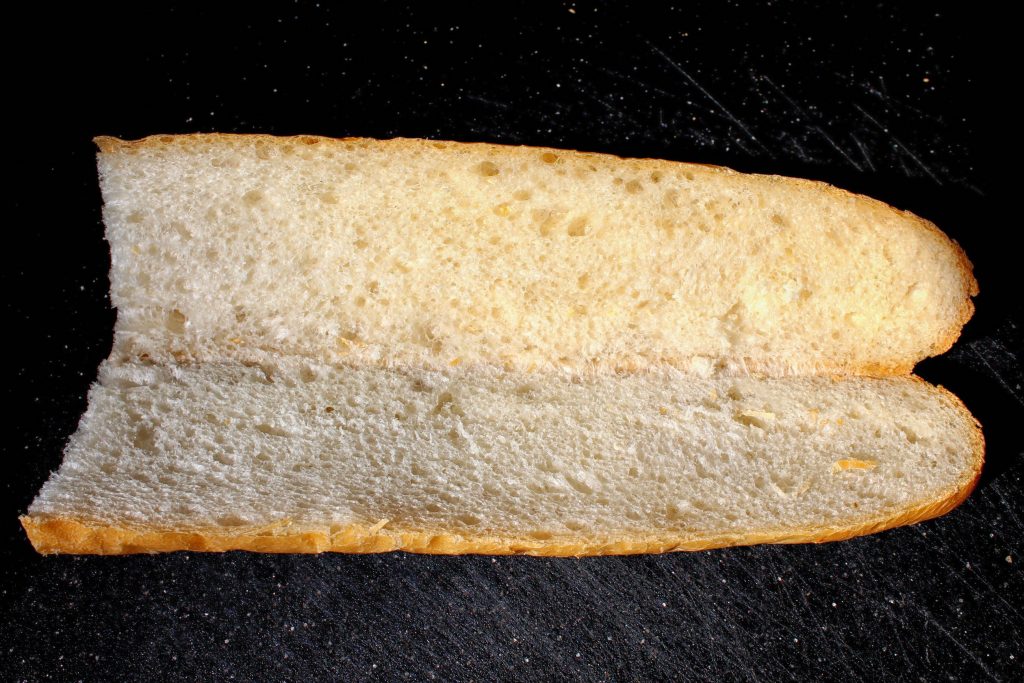
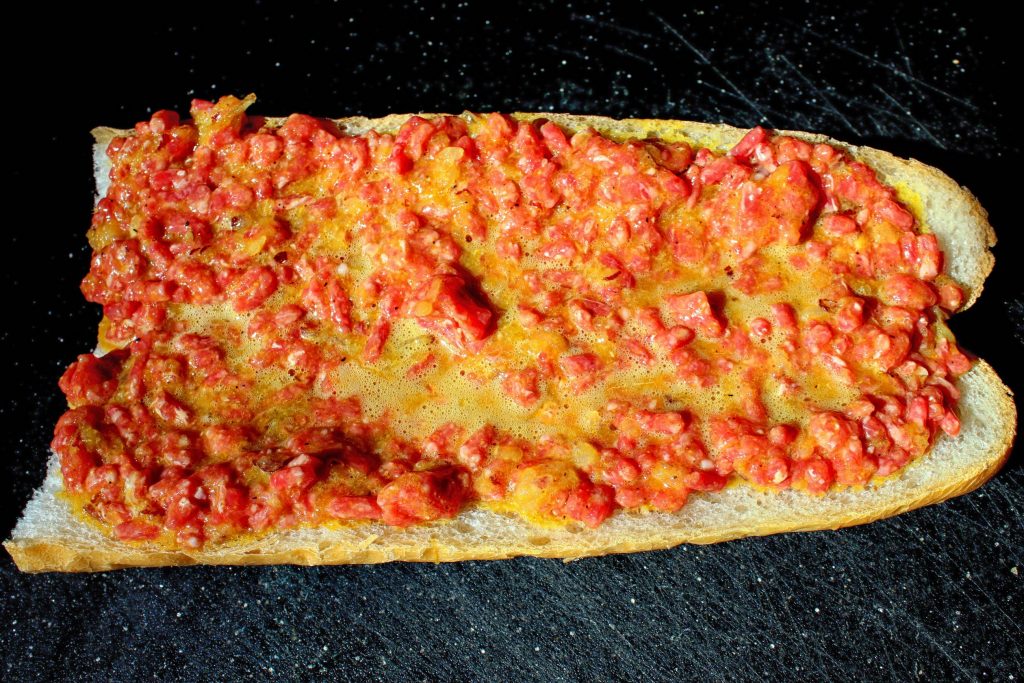

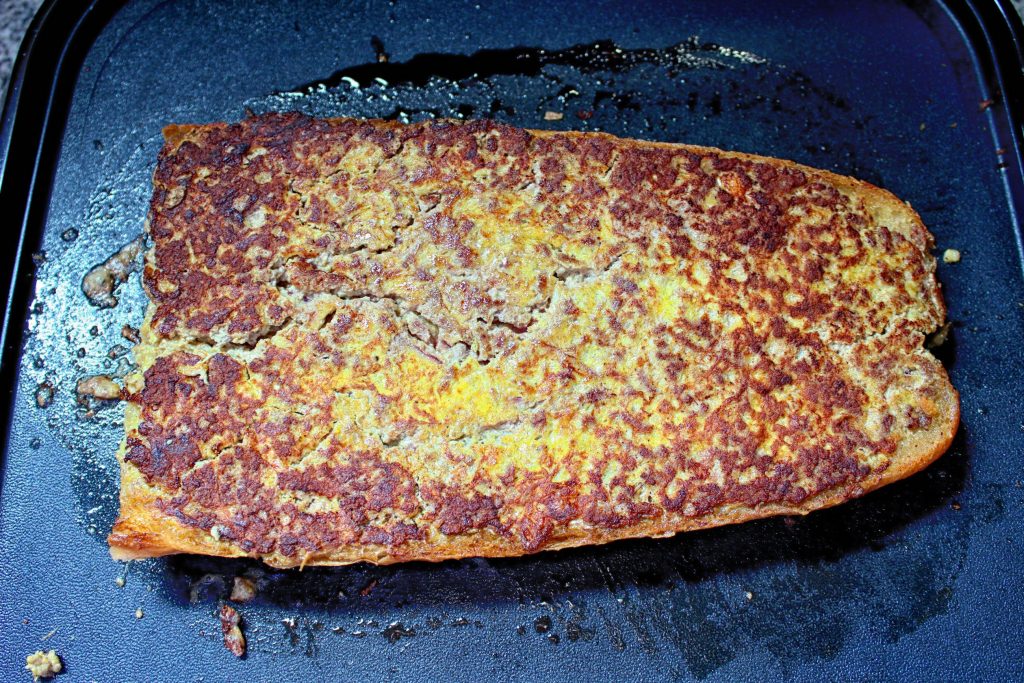


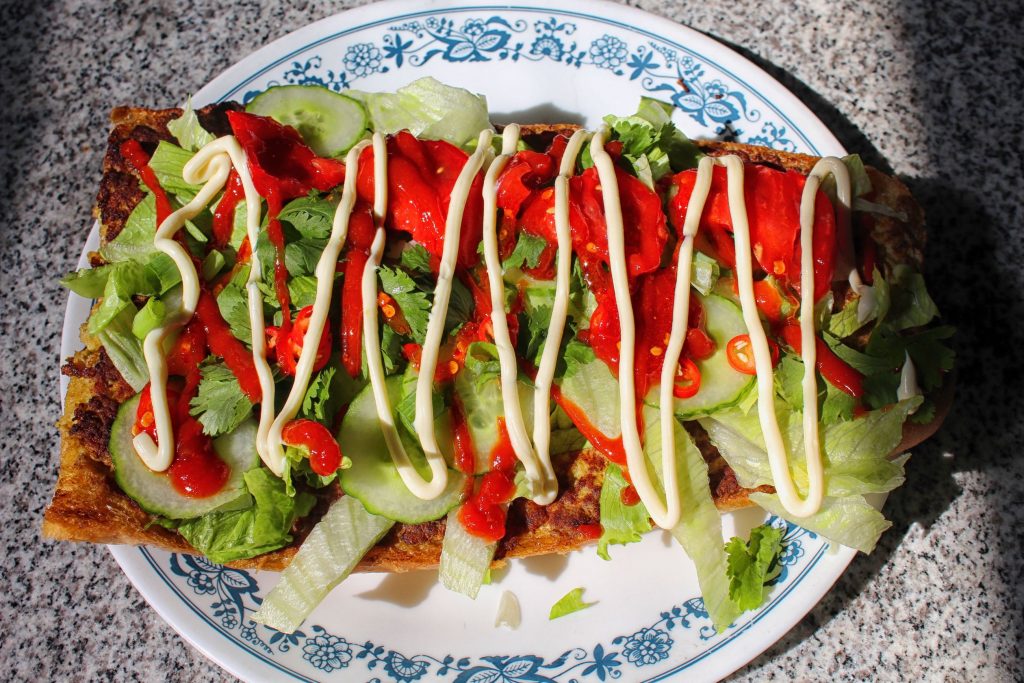
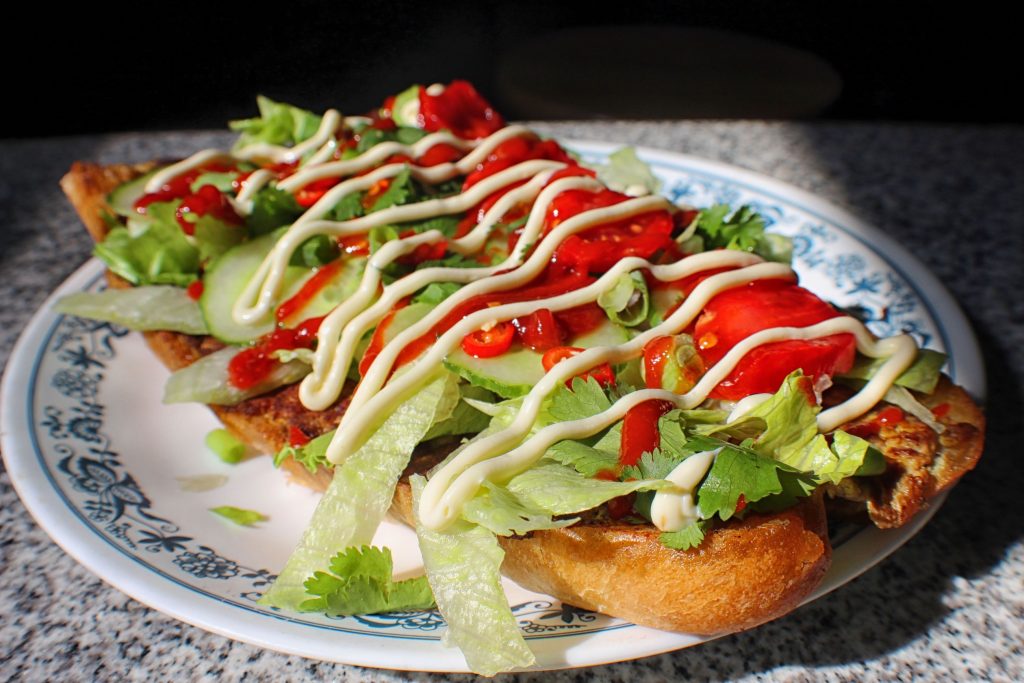


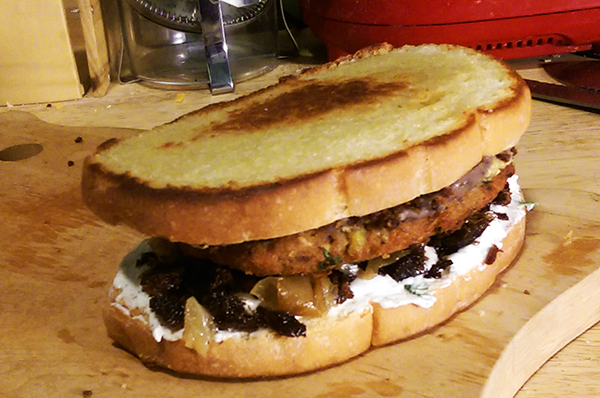







Sure wish those pictures in the side bars had links to the sandwiches or the names if you clicked on ‘em